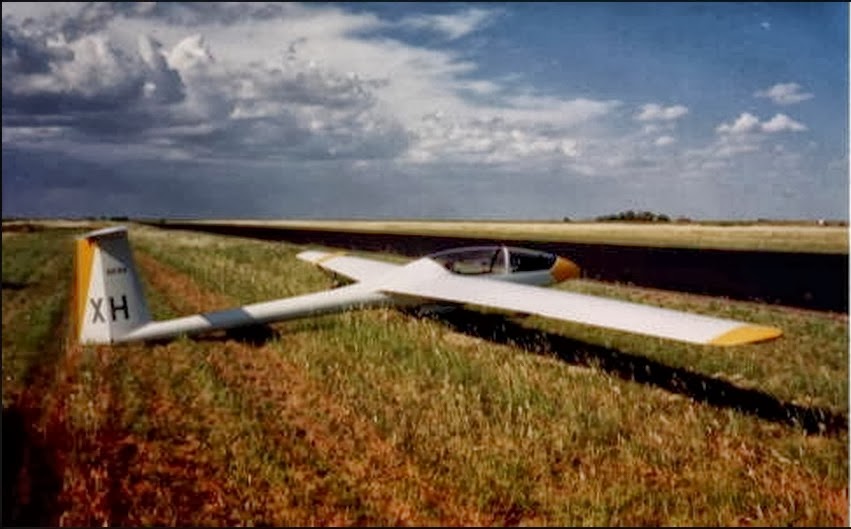My old friend was an airman
Learn Much, Work Hard, Do Good, Have Fun
Growing up the fun way. Walking with my grandmother to the outhouse on cold, snowy nights, embarrassed that I was wearing a flour sack shirt on the day of grade school photos, soloing airplanes in my teens, programming computers in the US Air Force, earning five FAA pilot ratings and an MBA, traveling to 23 countries, sharing the world with foster children and Little Brothers, and living the advice that I give all of those children: learn much, work hard, do good, have fun.
Saturday, January 22, 2022
Why would he lie?
Wednesday, December 15, 2021
Reaching for my first million
At McConnell AFB, Kansas, on a sunny afternoon in April 1964, I left the barracks and headed for the base post office about three blocks away. I was expecting a letter from home as well as some weekly news magazine. With just another block to go, I met my barracks roommate Fig (Julian Figueroa) and a few other Airmen headed toward the barracks.
Fig, said, "I got our mail, and you got a news magazine. It's Time.
"Great," I said, thanks, "Who's on the cover?"
Fig stopped, everyone else stopped, and Fig looked at the cover and said, "Hoover (my Air Force nickname), I'll give you a million dollars if you can guess who's on the cover. Three guesses." He held the magazine up so that I could see the back, but he and his buddies, who were straining to look around and over his shoulders, could see the front. I could see that each Airman was furrowing his brow and mumbling, "Who is that?"
Well, here we go again. Two years ago, at age 18, I spent a week with my brother, read one of his weekly news magazines, and decided then and there that, until I get out of the U.S. Air Force and start to some university, I'll educate myself by reading one or more news magazine (like Newsweek, US News and World Report, Time, Forbes, the Economist, etc.) cover to cover every week. Now, after two years of doing just that, I knew a lot--every U.S. governor, senator, cabinet member, and senior government official; key people in politics, business, military, sports, entertainment, and arts in countries, companies and organizations around the world, and tons of other useless tidbits (that, I found out later, would haunt me into old age). And, now, after two years of spending every spare minute sucking up massive amounts national and world news, every time something outside the box came up, I was the go to guy. Now, I was being tested. Again. Fig had tried this many times before and I always came out the winner. Who would win today?
"Okay," I said to the little crowed gathered on the sidewalk a block from the base post office. "I'll play. Is it male?"
"Yes, it's male," said Fig and throwing his head back and laughing one of those that's-all-you're-gonna-get laughs.
"Is he in business or the military?" I asked.
Fig raised his eyebrows, threw his shoulders and head back and said, "How the f**k should I know? I have no idea who he is or what he does!"
Hmm, I thought, he doesn't know the face and, with that exaggerated response, and with the obvious agreement of the group, they've never even heard the name. No one knows the face or name. A total stranger.
"Lee Iacocca?" I said.
Total silence. Fig's group stood wide eyed, mouths open, as they glance back and forth from the cover to each other.
"Icky who?" asked Fig. "Who's icky kaka?"
"Eye-uh-coke-uh," I said. "Lee Iacocca."
As our little group worked its way back to the barracks, I conducted an in-motion question and answer session that touched on such topics as Lee Iacocca, the advent of the Ford Mustang, Henry Ford II, and probably a few useless tidbits as well.
-----
I spoke with Fig last month. In the 1960s we worked with some of the Air Force's earliest computers. Today, we're 78 years old and enjoying retirement. Fig still owes me that million.
Monday, March 6, 2017
Places I've been - introduction
and, Museo Casa de Leon Trotsky the home from 1939-1940 of Russian Russian Marxist revolutionary and Soviet politician Leon Trotsky lived and, in August 1940, was murdered.
Upon completion of my story, Pat asked me why I didn't write a book...call it 'Places I've been'...tell about all the places I've been and the things I've seen and done. "Everybody should hear your stories."
Well, why not?
This blog is just an introduction. As time goes by and as time permits, I will write one or more blog entries recounting my remembrances of at least some of The Places I've Been.
Included in my future blogs will be places I've visited, such as:
North America
South America
Columbia
Cartagena
Spain
Africa
Morocco
See you there!
Saturday, January 10, 2015
Flying with Kendrick - Just One State Between Us
Ray Dabney and I met at the Rick Husband Amarillo International Airport and and waited for TacAir to tow the Civil Air Patrol Cessna 172 from the shop to Double A hanger where Ray and I waited in the ops room. The sky was clear, winds were light and variable and the temperature was in the upper forties and rising. Let's go flying!
It was a great day to practice takeoffs, landings, navigation, operation of the GPS (Apollo GX50) radio procedures, altitude selection, traffic spotting, runway selection, and, we were monitoring the aircraft and systems to insure that recent squawks--vacuum pump replacement, low voltage light indications, weak signal on radio number 1 and a new gasket on cylinder number 3 were in good working order. Because of the recent work on cylinder number 3, we needed to get 10 tach hours on the plane (before we could resume CAP cadet orientation rides), and, we did not want to fly too far from our home airport just in case warning lights came on indicating that we might need to fly back back home and return the aircraft to the shop.
So, our flight today was aircraft checkout and pilot/crew proficiency training. We planned to be up about 3.5 hours flying to various airports in the Texas Panhandle and not getting much more than 50 miles away from Amarillo International. Our flight plan included landing at Texas Panhandle airports near Pampa, Borger, Dumas, Dalhart, Vega and Hereford, and, then returning to our home airport Amarillo International.
And Kendrick? Why is his name in the heading of this blog?
While I was waiting in the Civil Air Patrol ops room for TacAir to tow our plane from the shop, Kendrick sent me a text message stating that he was about to take off in "Riddle 34"--an Embry Riddle Aeronautical University Cessna 172 based at the Prescott Municipal Airport in Prescott Arizona.
(Thanks to FlightAware for this photo.)
Kendrick--my grandson and an 18 year old aeronautical studies student at ERAU--was going to fly solo from Prescott, Arizona to Winslow, Arizona, land at the Winslow airport, taxi back to the take off point, and fly back to Prescott. His flight--a training flight that was, in part, preparation for his upcoming FAA Private Pilot check ride--would have him in the air about two hours.
Let the flights begin.
Ray and I took off from Amarillo International's runway 4 at 10:45 AM central time (16:45 zulu) and headed for Pampa, Texas. At Pampa's Perry Lefors Field, we made one touch and go on runway 17 and continued on to Borger. At Borger's Hutchinson County airport, we made a touch and go on runway 21 and continued on to Dumas. At Dumas' Moore County airport, we made a touch and go on runway 19 and continued on to Dalhart.
On this leg of our flight we could see the Rocky Mountain foothills looming across the New Mexico border, so Ray and I got our cameras out and began snapping. Also visible in our photos are the crop circle and pivot sprinkler systems so common in the northwest Texas Panhandle. (The white stuff on the ground is snow.)
At exactly 12 o'clock noon, we landed at the Dalhart Municipal airport on runway 35 and taxied to the parking area for our planned lunch stop. Ray then took this photo of me at the Dalhart airport.
While awaiting lunch at the Dalhart airport, I sent the above photos to Kendrick and said, "Hope you're having a good flight."
Moments later, while Ray and I were ordering lunch, my phone buzzed and I received the following photos.
We both had good flights today and enjoyed sharing photos.
One side note
The Air Route Traffic Control Center (ARTCC) in Albuquerque, New Mexico controls air traffic in a portion of eastern Arizona (including Prescott), most of New Mexico, and a portion of west Texas (including Amarillo). For a short time this morning, Kendrick and I were both speaking with flight controllers in the "Albuquerque Center."
Although Kendrick and I could not hear each other on the radio, I guess I could have told my controller to tell Kendrick's controller to tell Riddle 36 that CAP 4239 said, "Hi."
Monday, December 22, 2014
Another Beautiful Day on the Craton
CAP4239, Go ahead.
Cap4239 is at the double A hangar with Mike, VFR to Tango 45 at 5,500 feet, request VFR flight following, ready to taxi.
CAP4239 squawk company, taxi to runway 22 via Charlie Papa departure will be 119 point 5.
Roger, taxi to runway 22 via Charlie Papa, squawk company, departure 119 point 5 CAP4239.
After Aaron ran the Pre-takeoff checklist, with his thumb marking each item until he heard a positive response, we called tower.
Amarillo Tower, CAP 4239 ready for takeoff 22.
CAP4239, hold your position, traffic of final.
Roger, holding position, CAP4239.
Cleared for takeoff runway 22, turn left on course, CAP4239.
On climb out, took photo of TACAir located at taxiway bravo.
CAP 4239, begin left turn now.
Roger, left turn now, CAP 4239.
CAP 4239 contact departure. Good day.
Going to departure.
Amarillo Departure. CAP 4239 passing through forty five hundred for fifty five.
CAP 4239 report airport in sight.
Roger, will report airport in sight. CAP 4239.
Aaron took controls at 1000 feet AGL--4600 indicated--continued climbed to 5,500 feet and maintained GX50 specified heading of 56 degrees tp Panhandle.
Amarillo departure, CAP 4239 has the airport.
CAP 4239, squawk VFR. Change to advisory approved. Good day.
Tune 122.7.
Panhandle Carson county airport, CAP 4239 Cessna 172 is 3 miles southwest of the field will be entering a left downwind for runway 17, Panhandle traffic.
Panhandle traffic, CAP 4239 entering a left downwind runway 17, Panhandle traffic.
Panhandle traffic, CAP 4239 on left base runway 17, Panhandle traffic.
Panhandle traffic, CAP 4239 off runway 17 departing area to the north.
Repeat for Pampa and Borger.
After departing Borger to the south...
Listen to and copy AMA ATIS.
Determine location by touching GX50 NRST and looking at screen.
Amarillo approach, CAP 4239.
CAP 4239, go ahead.
CAP 4239 8 miles south of Borger, 5500 feet with November, returning to International, would like to shoot some touch and goes.
CAP 4239 squawk company. Expect straight in runway 22.
Roger, expect straight in runway 22, CAP 4239.
CAP 4239 radar contact 8.5 miles SW of Borger airport.
Roger.
10 miles out.
Amarillo Approach, CAP 4239 has the field.
Roger.
5 miles out
CAP 4239 contact tower 118 point 3.
Going to tower, CAP 4239.
Amarillo tower, CAP 4239 final 22, touch and go.
CAP 4239 cleared for the option.
After touch and go.
CAP 4239 request right closed traffic.
CAP 4239 right closed traffic approved.
Click.
CAP 4239 cleared for the option.
Cleared for the option, CAP 4239.
After landing...
CAP 4239 going to double A.
CAP 4239 taxi to parking via Charlie, remain this frequency.
Taxi to parking via Charlie, remain with you, CAP 4239.
-----
* actually, the North American Craton, aka 'Laurentia'
Sunday, October 20, 2013
Freeman T. and the APs - Restricted to base
At 4:00 AM the fire alarm screamed throughout the barracks. As happened every time the barracks were to be inspected, about 60 sleepy-eyed, blanket-wrapped airmen exited each of the four doors of the two story barracks--60 stumbled out of the top north door, 60 from the bottom north door, 60 from the top south door and 60 from the bottom south door. We always stood outside on the grass for five to ten minutes, and, then, re-entered the barracks to start the day and prepare for the upcoming inspection. This was probably our 8th inspection and and we all knew the routine.
But, on this cold Wednesday morning November 25, 1961--there was a variation. Some blanket-wrapped, bare-footed airman on the second floor, north end stood in the hallway and said we don't need to go outside--we're already awake, we know the drill. Someone else agreed and stood by his door encouraging others to stay put as well. Some got to the north end fire exit stairway, saw how cold it was outside and quickly agreed with those prescient young men who stood their ground in the hallway and refused to go outside. When I came out of my door, about 59 airmen were standing in the hallway assuring each other that this was the wisest thing to do--why did it take us so long to figure this out? I quickly saw the logic and joined these north end, top floor fire drill miscreants.
We stood in the hallway and talked until we saw the airmen on the south end, top floor of the building re-entering their doorway. We marveled at our cleverness, returned to our rooms and started our day of showering, shaving, dressing and polishing everything that could be polished for inspection. It would be a good day and the upcoming four-day Thanksgiving weekend would be even better. Life is good.
But, maybe not. MSgt Freeman T. Evans--without knocking--opened the door of our room, looked in at the three of us and said, "My office." We looked at each other and walked into the hallway. Sgt Evans was headed downstairs to his office at the center of the first floor of the barracks. Sixty variously-dressed airmen stood in front of Sgt. Evans desk. "Why didn't you go outside like you're supposed to during a fire drill?" No one volunteered an answer. It was a very quiet five seconds. Then, Sergeant Evans said, "Go get your Class A passes and put them right here," tapping the corner of his desk. "You can come get your pass back on Monday." He grabbed and began reading some important-looking paper indicating to each of us that this discussion was over.
Thirty somewhat dazed young airmen walked upstairs, rifled their wallets, looked lovingly at their Class A Pass and then headed back downstairs. The stack of cards on Sgt Evans desk was growing when I got there but I dreamed that he would say something like, "Keep your card, I was just making a point, go ahead and enjoy the Thanksgiving weekend."
But, no. It was done. Sixty young airmen would spend Thanksgiving weekend on base--no off-base movies, no off-base travel, no off-base restaurants, no off-base visits, no off-base dates. We were stuck! Some of us had planned to go to a nearby home--Doris and Ralph Hannah had invited some of us to their home for Thanksgiving dinner--and, a few airmen had dates for the weekend. Nobody had expected to spend the entire Thanksgiving weekend on base! (Although Air Police--APs--rarely checked Class A Passes off base, there was always the chance of getting checked while leaving or entering the base through one of the many armed and guarded gates. Yep, we were stuck on base for Thanksgiving weekend.)
Jailbreak
On Wednesday evening, after many airmen in other parts of our barracks had departed for their long weekend, Ed Kinney, Bill Macklin and I met in a secluded area and I presented my jailbreak plan.
Today, I had reserved one of the Aero Club's Cessna 172s for noon Thanksgiving Day. My plan was this: at noon on Thanksgiving Day, we would take off from McConnell AFB, fly to Wichita's Mid-Continent Airport, bum a ride to our favorite restaurant, enjoy the Thanksgiving dinner that we had planned weeks ago, bum a ride back to Mid-Continent and then fly back to the Air Base. We would never pass through one of the base's guarded gates.
The next day, Thanksgiving morning was bright and clear.We boarded our Cessna 172, I taxied out to 12,000 foot long runway 18R and we departed the base. Our day went as planned, Thanksgiving dinner was better than expected, and, late Thursday afternoon back at the base, we walked into the barracks day room where 50 or so bored and frustrated airmen were arguing about which game to watch on TV. We looked around, pitied their predicament and walked back to our rooms to contemplate one of the finest, adrenaline-fueled Thanksgiving dinners so far in our young lives.
Freeman T. and the APs--fooled again!
Saturday, October 19, 2013
Glider test pilot - first flight in single-seat Jantar Standard sailplane
Dick and I had just assembled our sleek, white, fiberglass, high-performance, retractable-gear, T-tail, single-seat Jantar Standard sailplane and it was ready to fly. However, neither of us had ever flown this Jantar sailplane before. Actually, neither of us had ever flown any Jantar sailplane before. As a matter of fact, neither of us had ever seen any Jantar sailplane fly at all. But, it looked good. The previous owner told us it would fly. All the pieces went together as advertised, and, after we assembled it, we didn't have any pieces left! It must be ready to fly.
Well, the tow-plane pilot was waiting and the Jantar looked like it was ready to go. Now what do we do?
1977 SZD-41A Jantar Standard Glider N11XH at the Panhandle, Texas airport
...all dressed up and waiting for a pilot.
-----
For 6 months, Dick Wilfong and I had looked for a sailplane to buy. We traveled to Dallas, but didn't like any of the 'for sale' sailplanes we saw there.
A few weekends later, Dick and I traveled to the Decatur, Texas airport and met a gentleman from Louisiana. He had a 1977 Jantar Standard and had agreed to meet us about halfway between our two home cities to show us his sailplane.
We peeked into the long glider trailer. (Glider, sailplane, we use the term interchangeably.) The plane looked good, the trailer and plane were clean. We needed a closer look.
I'll not go into lots of detail here, but, we pulled the fuselage halfway out of the trailer, removed and attached one wing, attached a wing dolly to that wing in order to keep the aircraft level, removed and attached the other wing, pulled the glider completely out of the trailer, and, then, removed and attached the horizontal stabilizer. During this process, the owner gave us continuous detailed instructions and answered all of our questions. When the glider was assembled, we took turns sitting in the single-person cockpit where we buckled the 4-point seat belt; latched the canopy; worked the stick, rudder, brakes, spoilers; did not retract the single, center-wheel landing gear; operated the tow-rope release handle; and switched and clicked all of the electrical equipment.
When we had seen everything, we returned the aircraft to the trailer reversing the order that the pieces had been taken out. Everything was smooth and simple; all made sense. Of course, the owner and long-time pilot of this sailplane made everything go smoothly, but, Dick and I did catch on fast.
Dick and I ran out of questions and had no qualms about anything. It was a deal. We shook hands with the seller, paid the man, hooked the trailer up to my white Cressida and headed for Amarillo. We had a sailplane.
-----
Two weeks later, we faced our dilemma: "Now, who's going to fly it?"
Dick said, "Want to flip a coin?"
I said, "Great."
Dick took out a coin and said, "Heads or tails?"
I said, "Wait, does the winner fly or does the winner watch?" We laughed and agreed that the winner would fly.
"Heads," I said.
Heads it was.
First flight
Dick and I pushed the Jantar to the north end of runway 17 at the Panhandle Airport. We removed the tail and wing dollies and I walked around the plane one more time. Everything was solid, all control surfaces reacted correctly to positive and negative control inputs, we had streamlined all open seams with white friction tape, battery was fully charged, the removable windshield was clean, parachute had a current inspection date, main tire was properly inflated, tow rope hooked and unhooked properly--I was ready to hop aboard.
I got into the plane and buckled in. Dick picked up the canopy, set it in place and I locked both sides. Dick hooked the tow rope to the nose hook, pulled it tight and signaled me to released it. I did and it worked fine. Dick, hooked the tow rope up again and signaled for the tow plane to take out the slack in the rope.
This is the club's Cessna 182 tow plane. On soaring days, if I was not flying a glider, I was flying the tow plane. (If you click the photo to enlarge it, you can see the tail hook at the bottom of the airplane's tail. Typically, the glider pilot, at 2,000 AGL, released from the tow rope and headed out. The tow plane then drug the tow rope back to the airport, and, at about 200 feet over the approach end of the runway, dropped the tow rope so that it fell right onto the runway numbers. By the time the tow plane landed and taxied back to the starting point on the runway, the ground crew had positioned the next glider, hooked the tow rope to the nose of the glider and were waiting to hook the rope to the tow plane.)
The tow plane taxied ahead until the tow plane signaller raised his arms and crossed his wrists. Now, the tow rope laid flat on the runway and had no curls. I checked the instruments. Dick held up the tail dolly so that I could see and verify that it had been removed from the plane (you do not want to take off with the tail dolly attached to the plane). The tow plane signaller stood expectantly beside the tow plane looking back at the glider sitting 200 feet behind. Eight glider pilots stood beside the runway watching and waiting. The take off checklist was complete and I had nothing else to do but fly.
With my feet on the rudder pedals, my right hand on the stick and my mind focused laser-like on the scene through the windshield, I quickly glanced at Dick, who was standing at my right wing-tip, and gave him a thumbs up. Dick stooped down and lifted the right wing tip until the wings were level. Only by pulling the tow rope release handle now can I stop the next steps.
The tow plane signaller saw the wings become level and began slinging his left arm in a complete, vertical circular motion. A light cloud of dust rose behind the tow plane, the rope rose from the ground and we were moving forward. Dick, holding the wing tip, walked and then ran for 5 to 10 seconds and then let go. With the main gear and tail wheel still on the ground, I steered the glider--with aileron, rudder and elevator--down the runway behind the tow plane. Gently pushing forward on the stick, I raised the tail wheel. Keeping wings level, fuselage straight and nose level, we gained speed. At some speed--probably around 40 to 50 knots (you do not look at the instruments much during takeoff)--the plane lifted off the ground.
Now the hard part
I was now flying the glider but the tow plane needed another 10 to 20 seconds to get into the air. Until the tow plane leaves the ground, I must fly perfect formation behind him--rope taut, wings level, same altitude and directly behind the tow plane's tail. I must nail it! (The high-performance fiberglass 'rocket' glider wants to climb like, well, a rocket, but I must climb no higher than the tow plane. If I zoom up, I'll lift the tail of the tow plane making the tow plane uncontrollable. And, if I move left or right, the tow plane becomes uncontrollable. And, if I intentionally or unintentionally deploy the spoilers, drag increases so much that the tow plane can't reach takeoff speed. If any of those things happen, the tow plane pilot will--as agreed to beforehand--immediately release his end of the tow rope, fly away freely and bid me farewell--have a nice day! Understood rule between the tow-plane pilot and the glider pilot--hurt yourself if you wish but you're not going to hurt us both.)
I stayed behind the tow plane as he gained speed and lifted off the ground. With both of us in the air, I kept the rope taut, stayed at his altitude and matched his bank during turns. He circled the airport once while heading for a release altitude of two thousand feet above the ground and he stayed close to the airport just in case I screwed up and caused a rope break. See photo and note below.
Note - On August 15, 1993, while flying a two-seater Grob 103 in Hobbs, New Mexico (see photo above), I did have a rope break at 500 feet. I circled back, landed, got a new tow rope and flew 7 more flights trying very hard not to do that again. (While climbing out on tow, the glider pilot periodically glances at the altimeter, and, upon passing 400 feet, says, out loud, "Four hundred feet." Glider pilot rule: if you have a rope break before you have said, "Four hundred feet," you land straight ahead no matter what. Everything might be okay. If you have a rope break after you have said, "Four hundred feet," you immediately turn into the wind, complete your turn toward the airport of departure, and, land. Everything will be okay!)
During tow, we passed through some rising air and the tow pilot then planned our circuitous, rising flight so that I would be in that rising air when our little two-plane formation reached an altitude of 2,000 feet above the ground. The tow plane pilot and I both knew what was happening because we were both glider and tow plane pilots and we both knew that we were looking for rising air.
At 2,000 feet above the ground, about 3 miles southwest of the Panhandle airport, on a southwest heading, I decided that this thermal would work, so, I released the tow rope, and, at that moment I began a steep climbing turn to the right, and, the tow plane--dragging the 200 foot tow rope--began a descending left turn that would take him away from me. I immediately retracted the landing gear to reduce drag. (During tow, we leave the gear down causing some drag, because, the slick, high performance glider can too easily overtake the tow plane.)
The rest is history. I flew the beautiful Jantar Standard for 42 minutes that day--climbing and turning like a silent beautiful, white bird over the clear blue skies of Texas Panhandle. During the next few years, I would take this sailplane up to 22,000 feet and make flights longer than three hours. Like a dream. But, it was real. I could be a test pilot!
(circa 1995)




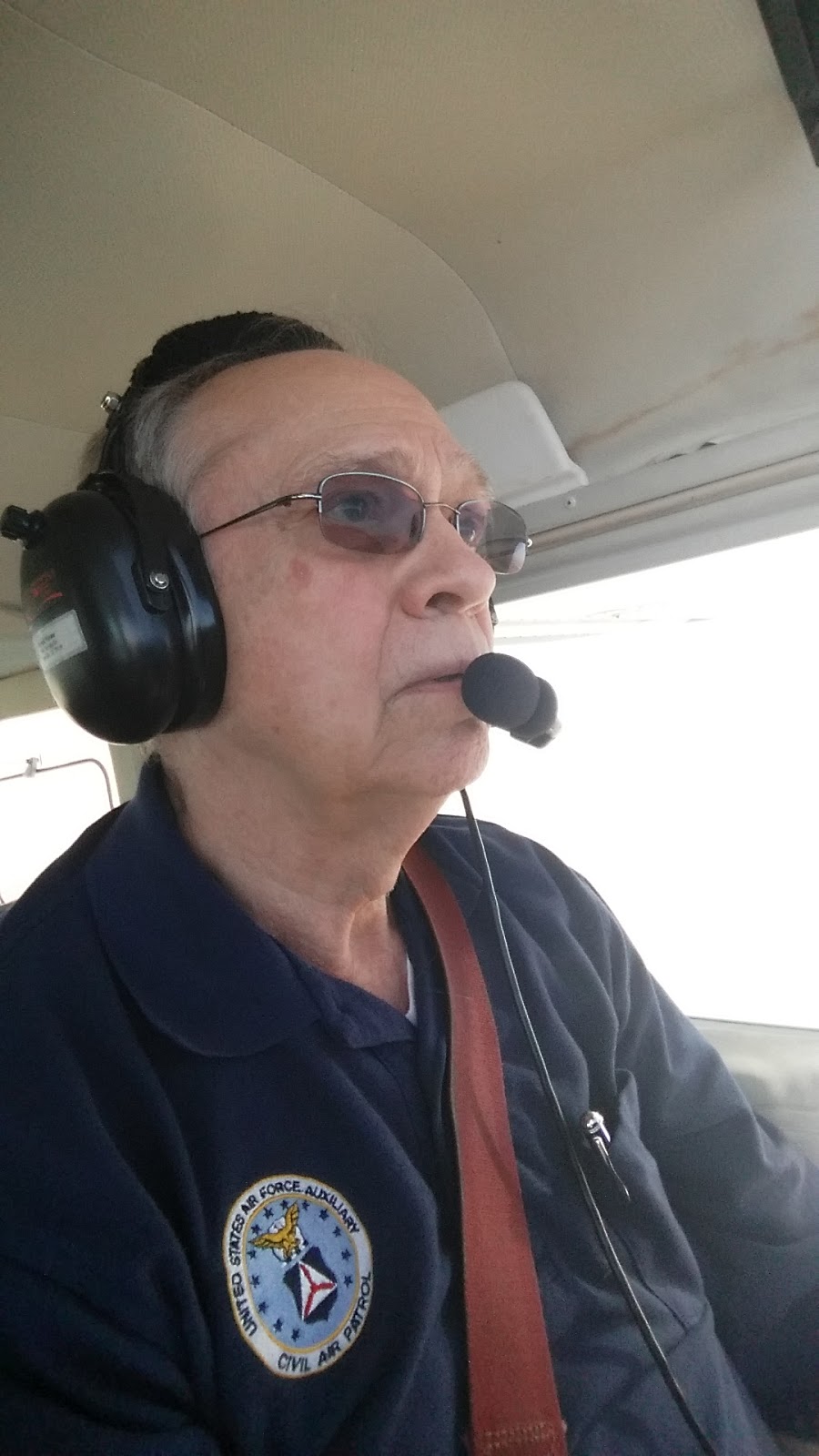
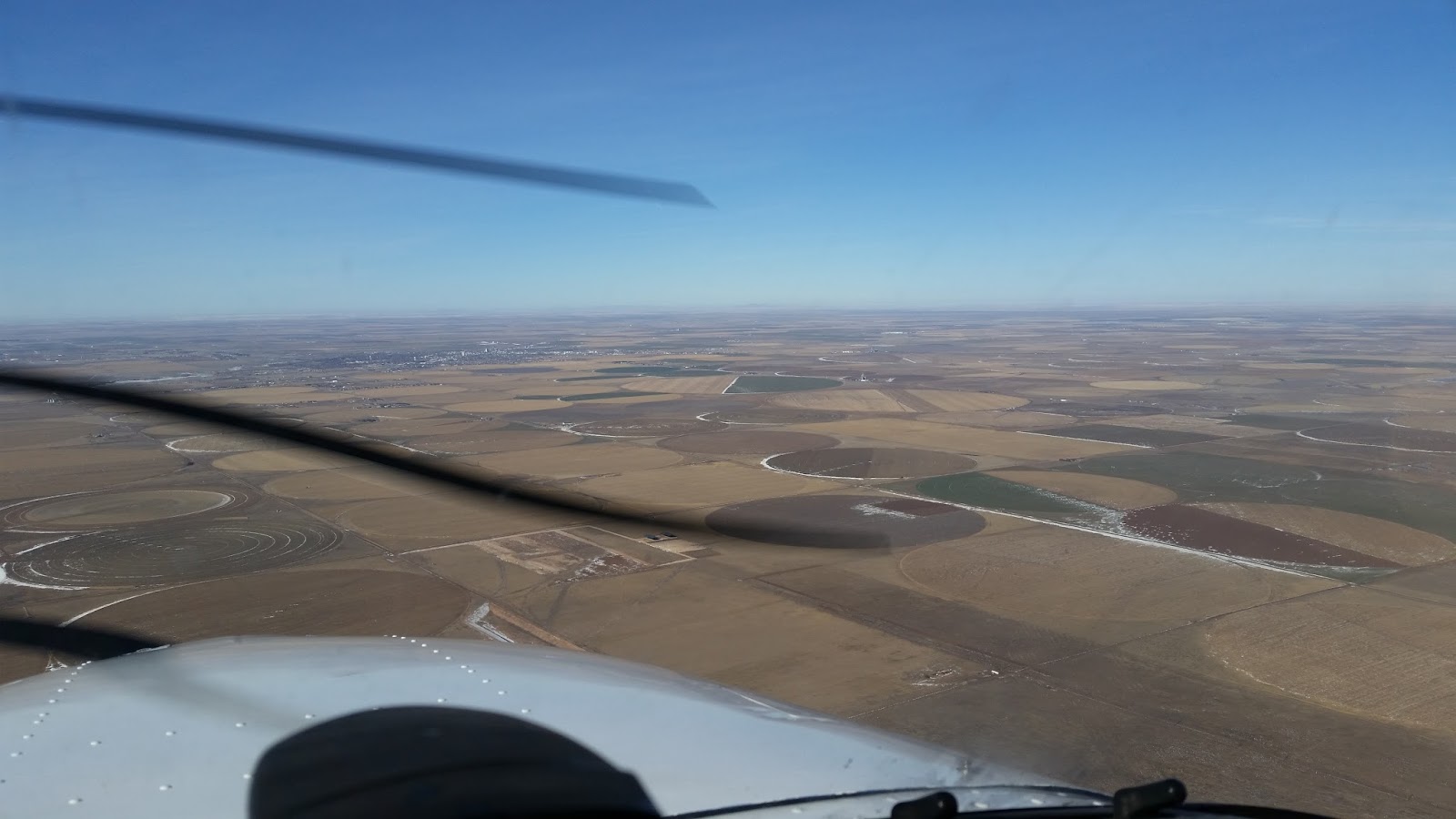
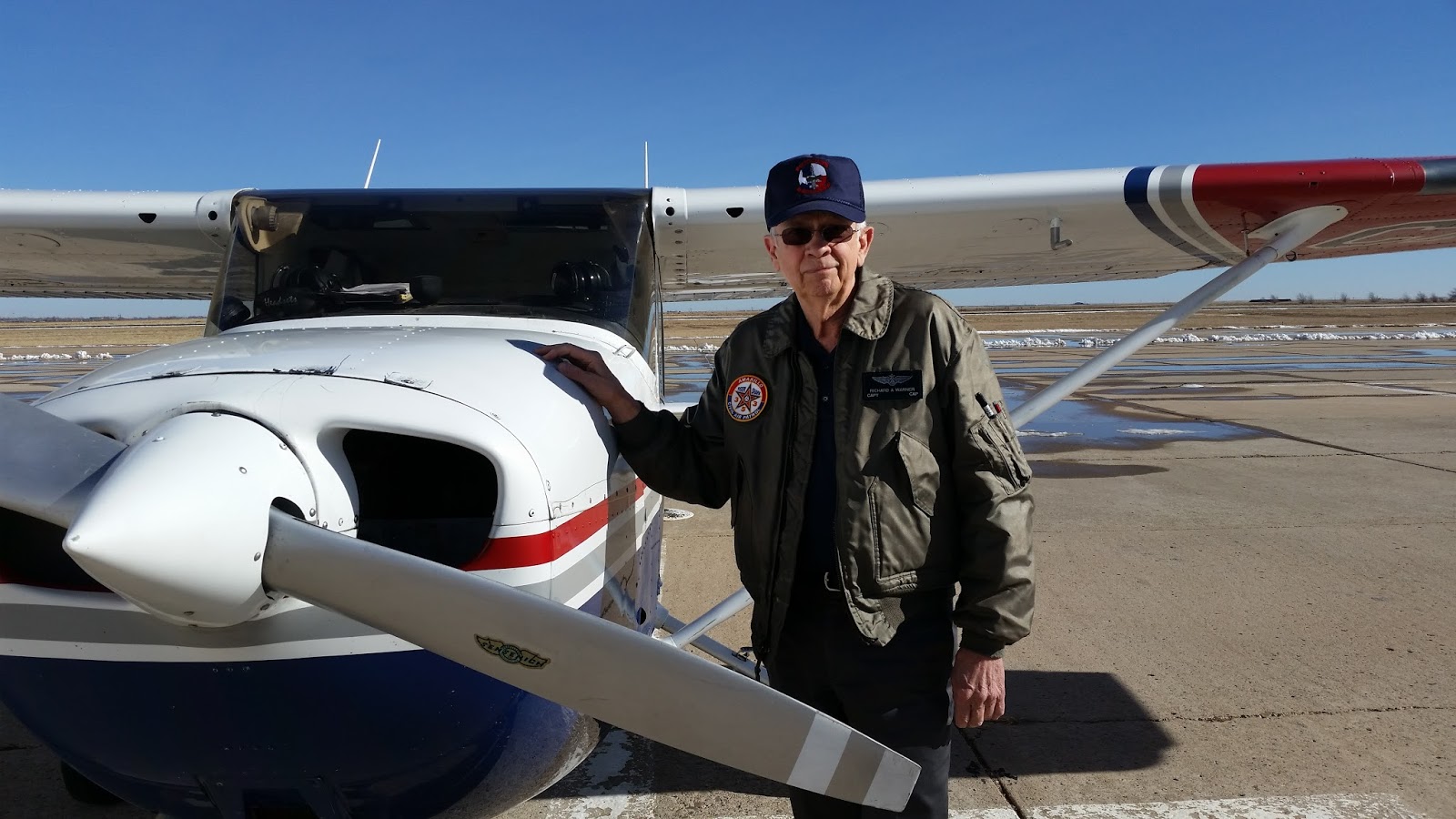
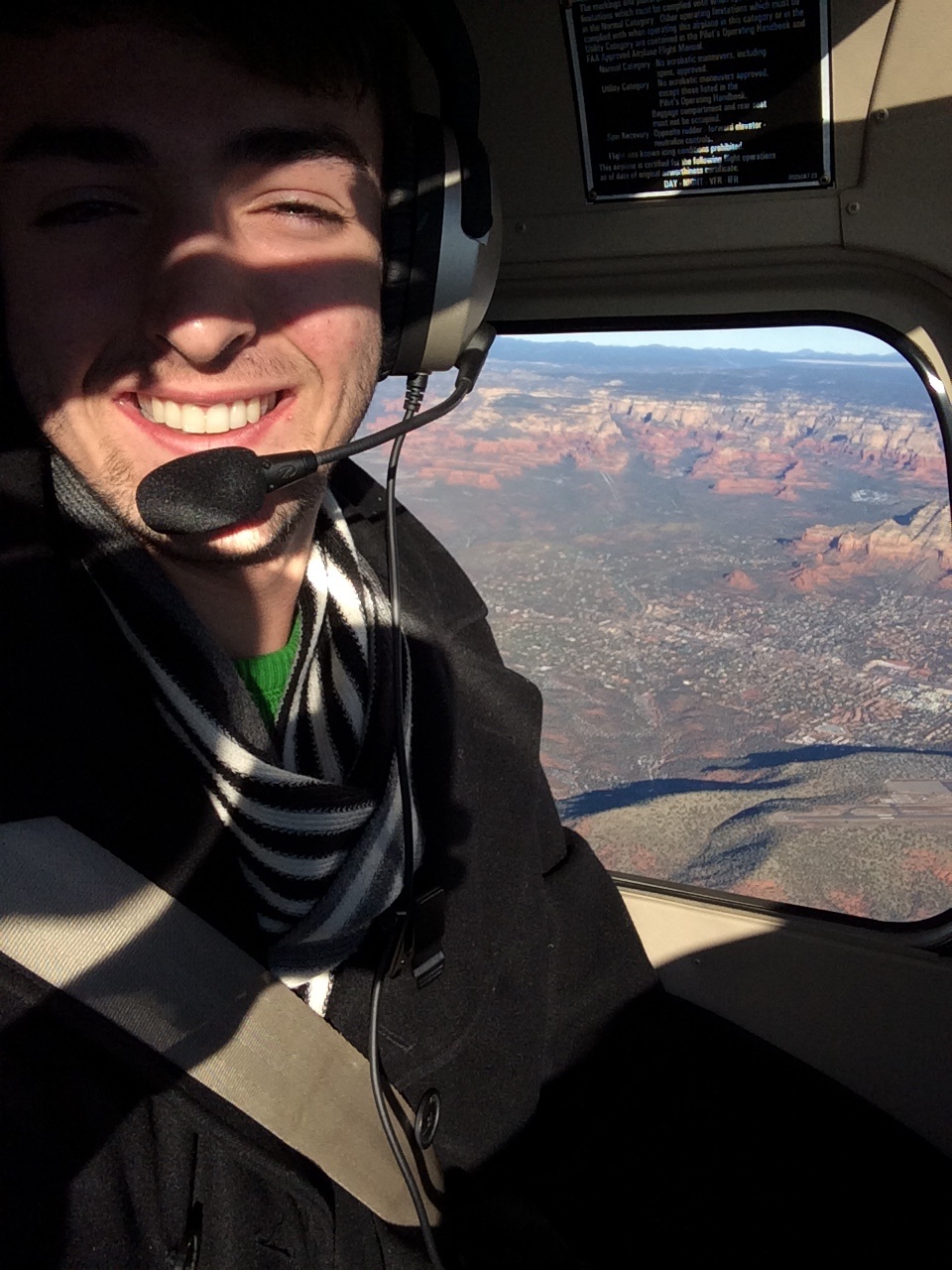
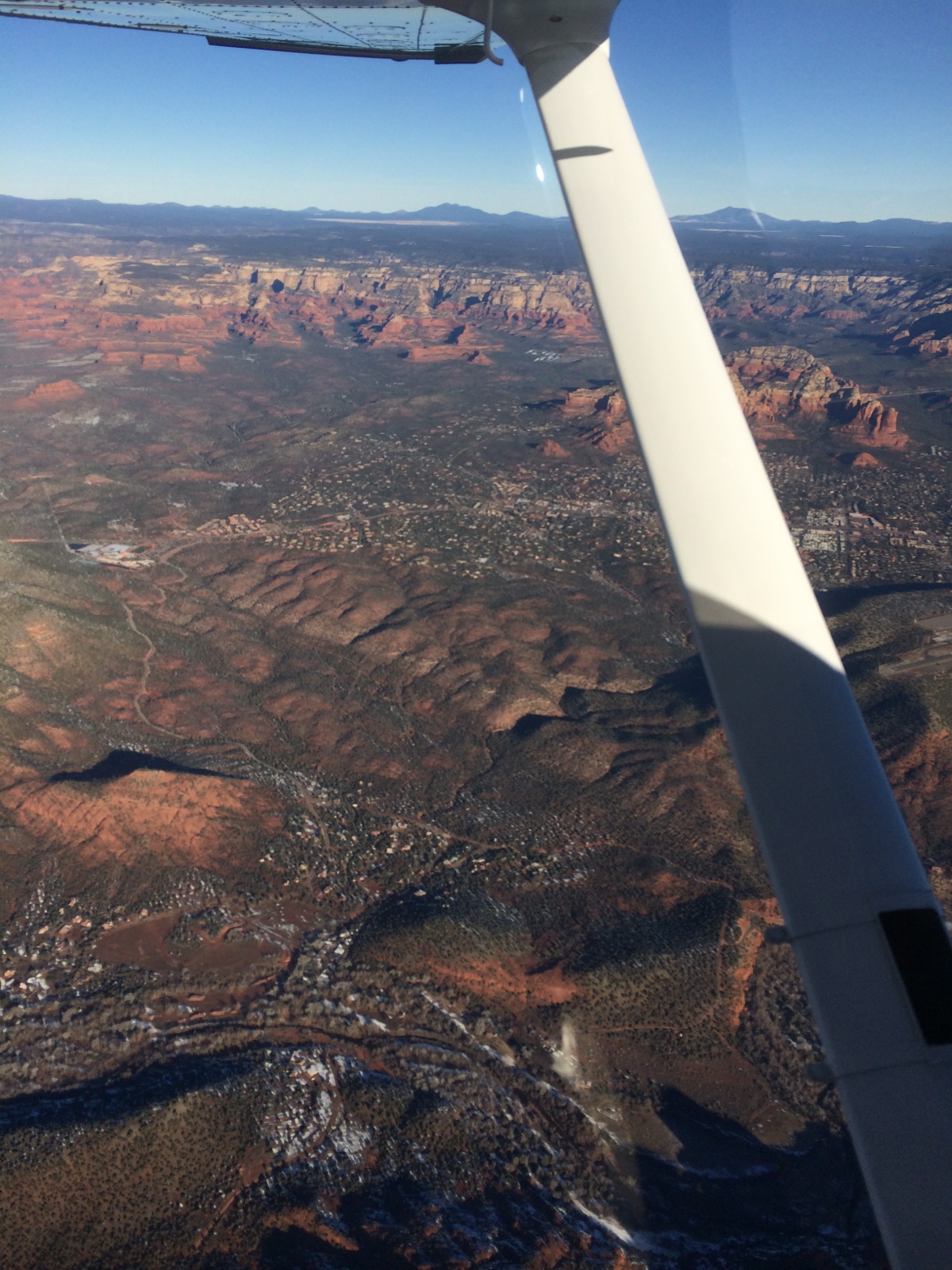
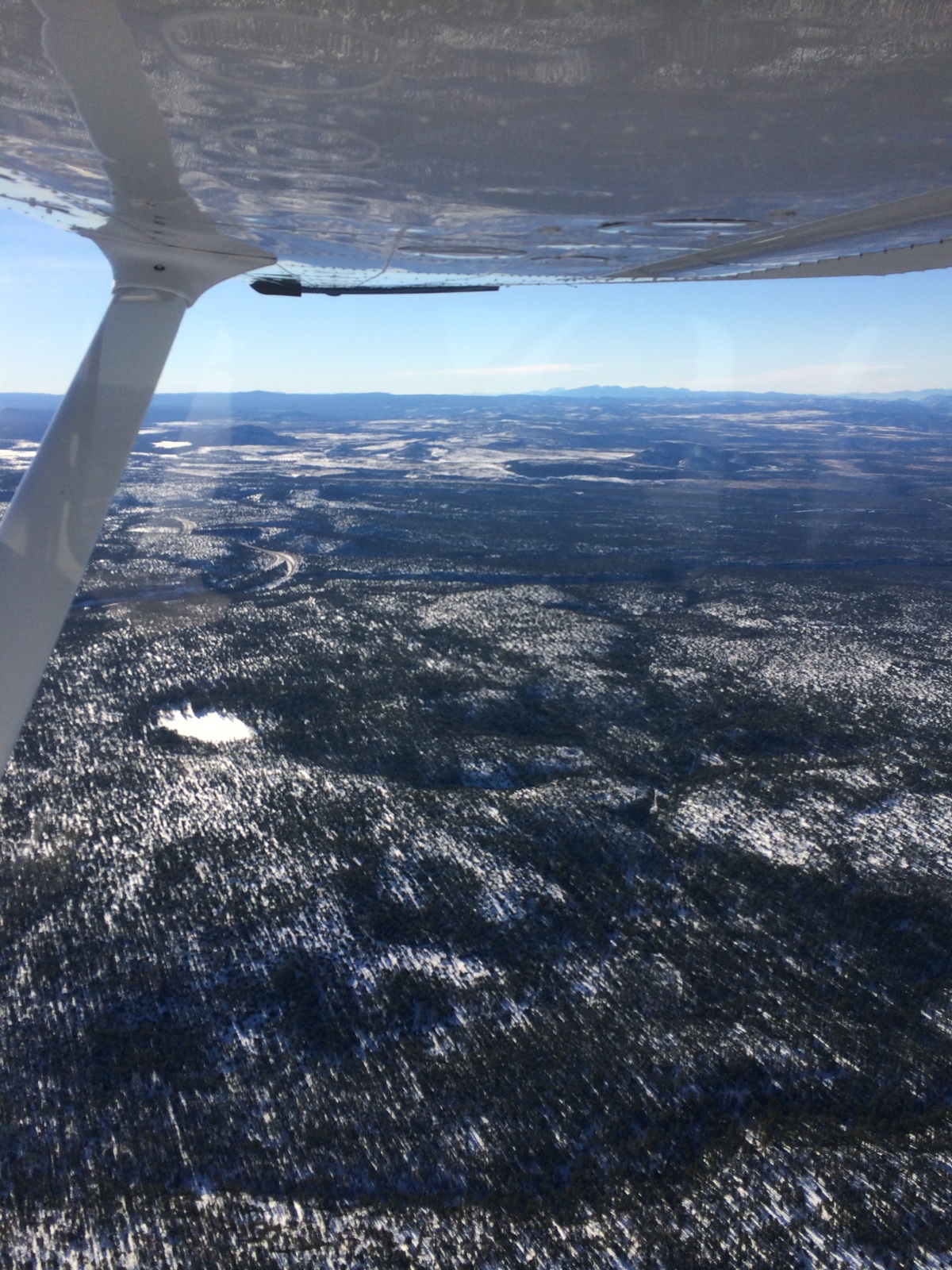
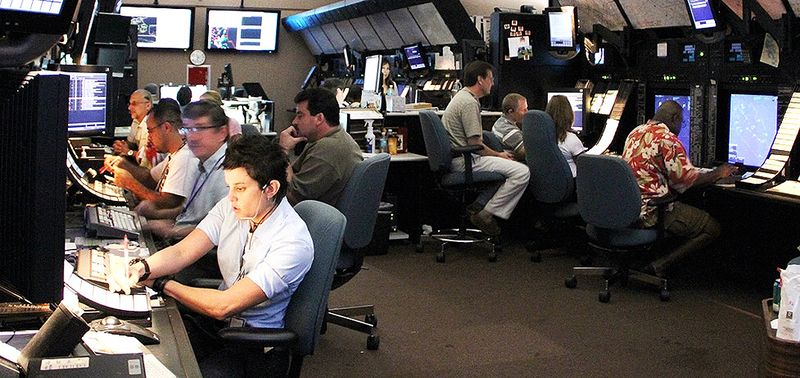
.jpg)
